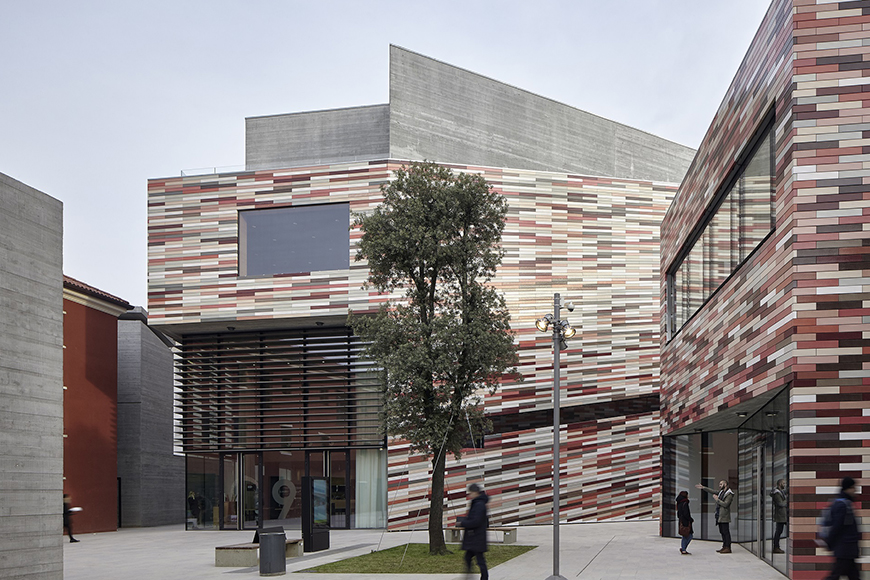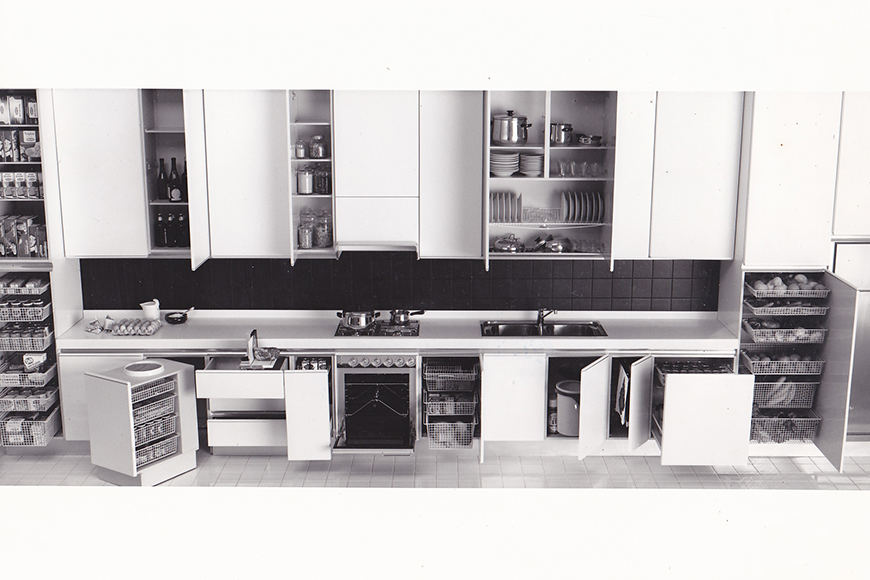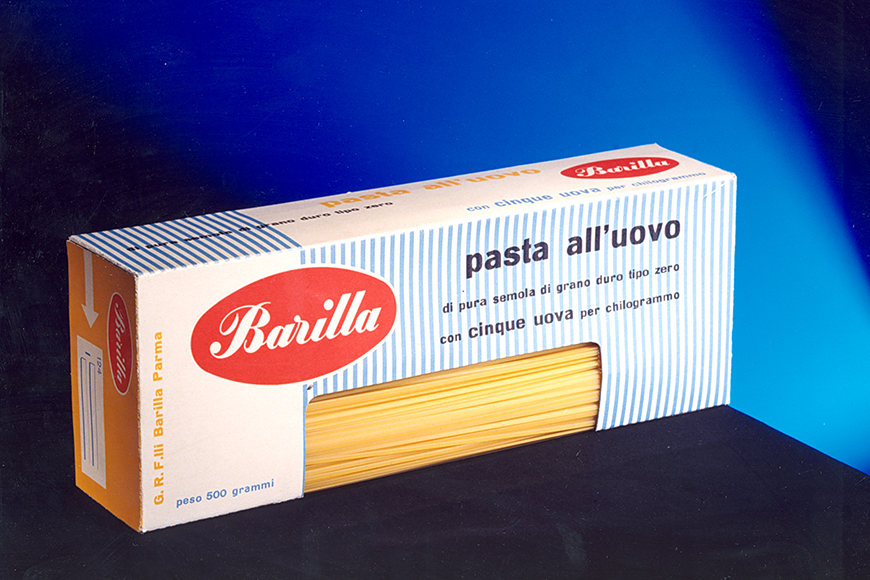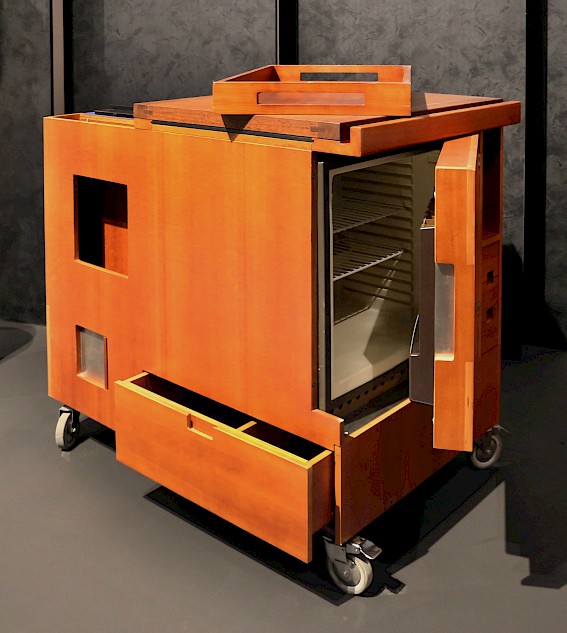
On March 25, the exhibition GUSTO! (litt. TASTE!) Italians at the Table 1970-2050 opened to the public at M9 Museum. This is the first of a trilogy of exhibitions that M9 Museum has designed in order to tell the story of Italian society, its deep desires and the changes it has experienced at the turn of a century, the 20th century, which M9 recounts in its permanent exhibition.
The moment we are going through is a dense time, on which cultural institutions like M9 can and must help us reflect. According to scientific director Luca Molinari, today we are living "a new time that makes us uneasy and that at the same time is a great opportunity to rethink our lives with greater attention to quality and widespread sustainability. In order to be able to imagine and build the future, looking at one's own recent history is of vital importance: "Leaning on the fragile shoulders of the twentieth century to look ahead, without moralism or apocalyptic visions, but to question with attention and love the metamorphosis of a different time, in which our relationship with food and its landscapes, both physical and symbolic, can become the mirror of more radical and significant changes". The idea behind the trilogy that will take place over the coming months and years is precisely that of analyzing the cultural and social traditions of our country, asking ourselves where we came from in order to understand where we are going. In this context, M9 defines itself as "an active laboratorythat acts in the present and interrogates the future scenarios we have before us".

Food is not only sustenance. The table becomes a metaphor for sharing, but also for understanding all the mixtures and contradictions of which we are made, as individuals and as a community. The curators Massimo Montanari and Laura Lazzaroni describe the structure of the exhibition: "We have built a large house made up of rooms that narrate the taste of Italians through the agricultural landscape, the biodiversity of products, home cooking, restaurants and markets, tables and street food, design and migratory flows, the challenges of the environment and health, spatial engineering and new supply chains, and the design of schools." An interdisciplinary and integrated approach, in which each discipline and each installation contributes to making the complexity of reality visible. Following this flow, the exhibition is developed in eight sections.
The first room is "Gusto Italiano," (Italian Taste) and it is dedicated to the typical flavors and ingredients of our country: "we chose to composed a monumental periodic table of ingredients: a seemingly endless list of products that together make Italian cuisine possible and always different. In a list of more than 1800 entries, cheeses and dairy products, cold cuts and meats, fruits and vegetables, oils and fats, cereals, pasta and vines make their appearance. The installation follows the same principle, transporting the visitor into the atmosphere of Italian production chains, with their typical views, but also the tradition of work and variety of cultivation methods.

In "Gusto della Casa", visitors can discover the evolution of Italian cuisine inside homes, with a collection of details, secrets, cookbooks and accessories. There are also video installations and interviews to Italians at the table, designed to give a sense of what it means to prepare and share a home-cooked meal. Iconic examples of Italian-designed kitchens are on display, the Minikitchen designed in 1964 by Joe Colombo for Boffi and Salvarani's 1972 Long Line Kitchen. Objects taken for granted, are extracted from everyday life in which they are normally immersed, emphasizing how they are part of a common imagination on which we build our ideas of home and kitchen.
"Gusto Fuori Casa" recounts, on the one hand, the tradition of restaurants and trattorias and, on the other, the ritual of large collective tables. We talk about research, excellence and conviviality. In the same section, there are also reproductions of Italian signature dishes, such as Gualtiero Marchesi's Risotto con foglia d'oro (Risotto with gold leaf), Giuseppe Cipriani's Carpaccio, Nino Berges' Uovo in raviolo (Egg in ravioli) and Mirella Cantarelli's Savarin di riso (Rice Savarin), Angelo Paracucchi's Spaghetti alla lampada, Nadia Santini's Tortelli di zucca, Fulvio Pierangelini's Passatina ceci e gamberi, Davide Scabin's Cyber egg, Niko Romito's Assoluto di cipolle and Massimo Bottura's Nero su nero.
"Taste of Industry" takes a close look at those Italian brands or companies that have achieved levels of excellence in the world. Nutella, with a collection of its characteristic jars, the iconic Barilla pasta packages, ice cream posters and typical bar signs are all present. In just a few meters, the viewer finds himself immersed in an all-Italian atmosphere, surrounded by objects commonly found on the streets and in our homes. It also speaks of the subtle balance between safeguarding tradition and opening up to the global market, in which many large Italian companies have proven capable of juggling.
"Taste of Travel" is a combination of gazes: in this section M9 analyzes Italy in the eyes of the world and then the world through the eyes of Italy. "We talk about mixtures, about what we have exported to the world and what we have instead welcomed, opening our tradition to new interpretations". Included in this section is a collaboration between M9 and Campari and the exhibition of three cult brands: Alemagna panettone, Iginio Massari's and Roy Shvartzapel's.
"Gusto dell'Incontro" speaks instead of two apparent dichotomies: that between north and south and that between city and country. In this context, "taste acts as a bridge," highlighting contrasts, but also links and synergies. The scene is enriched by a series of photographs by Filippo Romano, depicting stores, markets and restaurants.

The last two sections also use the metaphor of taste as a bridge: in this case between today and tomorrow. "Taste of Today" tackles the themes of food waste, nutrition and health: it is an attempt to make a critical reflection on contemporary ways of approaching food and taste, a "reflection on food and nutrition attentive to physical wellbeing, the environment, society, animals and the revolutionary entrance of science at the table and its attempt to objectify food".
"Taste of the Future" in the end "proposes the trends underway through a double look. On the one hand turned towards technological innovations (space and experimental crops even on Earth), on the other focused on the transformation of eating habits." On display, among other projects are EcoLogicStudio and its cultivation of spirulina algae and Zero Farms with its vertical aeroponic agriculture.

M9, opened for the first time in 2013, is the '900 Museum in Mestre. Its goal is to tell the story of the 20th century and our contemporaneity with a new perspective, paying attention to the big and small changes of our past that characterize our way of being today, "from everyday life to the big social, economic, environmental and cultural changes". The exhibition methods are also new: "advanced technologies and immersive installations are at the service of storytelling to make people learn about the past, understand the present and imagine the future." With the EDU program, the museum stands as an institution in the field of education and awareness of people of all ages: "an inclusive place to reflect through a broad educational program on the world we live in and the world we want, to feel part of a community and understand its roots together".
Starting this year, 2022, Morocolor is happy to partner with an institution like M9, whose values and goals it shares. In the hope of contributing with a bit of our color to a cultural diffusion that we think there is, now more than ever, an immense need.